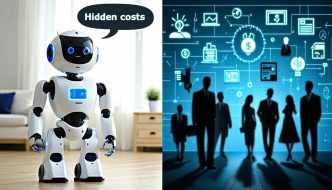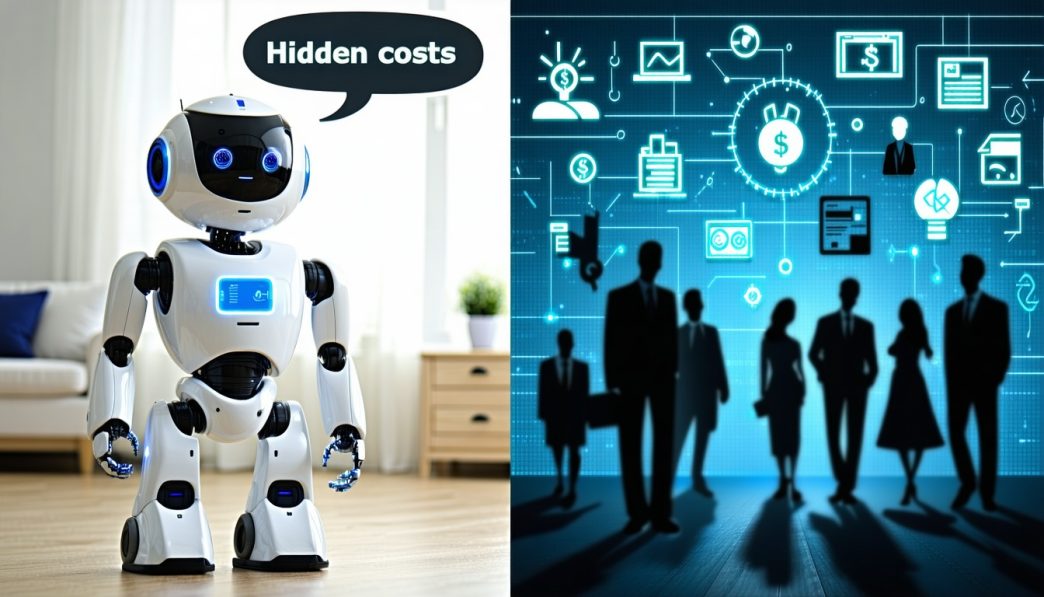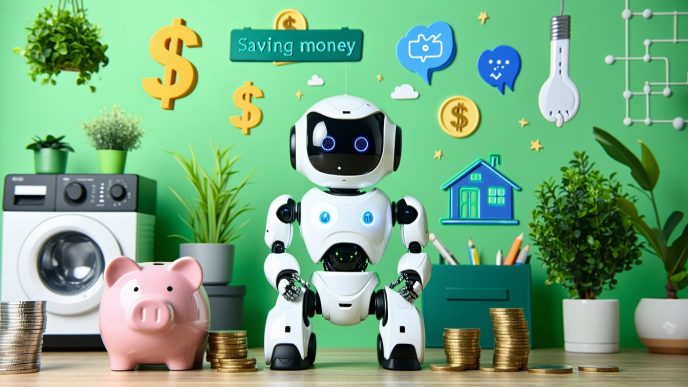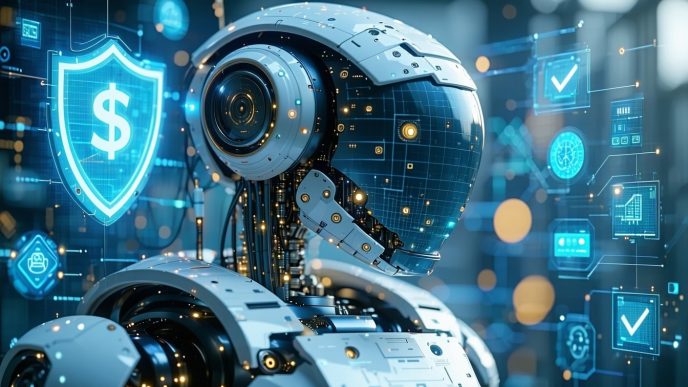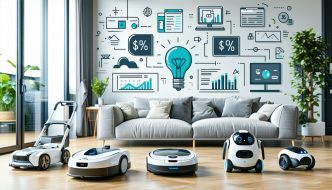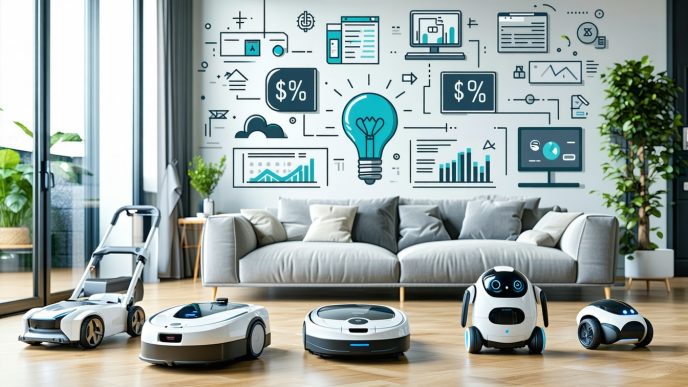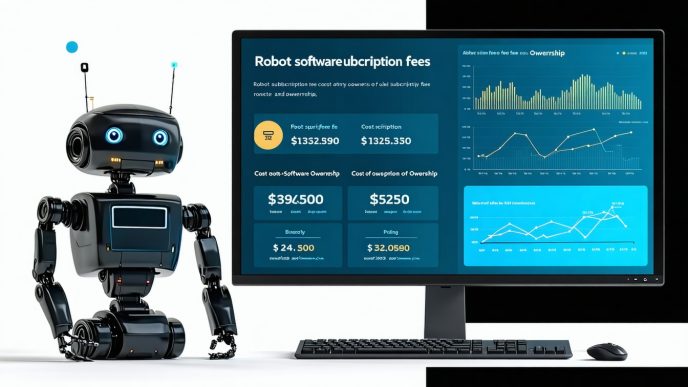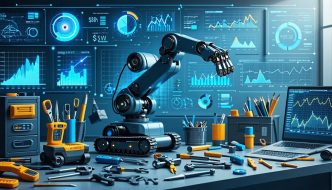The Real Cost of Robot Ownership
Understanding the financial implications of owning a robot extends beyond the initial purchase price. For first-time buyers, value-conscious shoppers, and tech enthusiasts, it is essential to consider the total cost of ownership, which encompasses many hidden costs associated with robot ownership.
Initial Purchase Price vs. Total Cost of Ownership
The initial purchase price of a robot may seem reasonable; however, it often does not reflect the long-term financial commitment required to maintain it. Total cost of ownership includes not only the upfront price but also ongoing expenses that can accumulate over time. Below is a breakdown of typical costs associated with robot ownership:
| Cost Category | Description | Estimated Cost Range |
|---|---|---|
| Initial Purchase Price | The price to acquire the robot | $200 – $3,000 |
| Regular Maintenance | Periodic servicing and upkeep | $50 – $300 annually |
| Subscription Fees | Access to software updates and features | $10 – $30 monthly |
| Energy Consumption | Power usage for operation | $5 – $20 monthly |
| Replacement Parts | Cost for parts like batteries | $20 – $100 per part |
| Repairs | Costs associated with fixing problems | $50 – $200 per incident |
| Insurance or Warranties | Coverage for unexpected issues | $50 – $150 annually |
The total cost can significantly exceed the initial investment, which is why evaluating all aspects is critical. Insights into cost of ownership for home robots can provide further clarity on how to budget effectively.
Factors Contributing to Hidden Costs
Several factors contribute to hidden costs in robot ownership. These may not be immediately apparent to buyers but can impact their financial decision-making:
-
Maintenance Needs: Regular maintenance is essential for optimal performance. For example, cleaning components and software updates might be required to ensure efficient operation. For detailed information on these expenses, see robot maintenance costs.
-
Software Subscription Fees: Many robots require updates or advanced features that are accessible only through subscription plans. This recurring expense can accumulate over time, adding to the overall cost. Learn more about these fees in our section on robot software subscription fees.
-
Battery Life and Replacement: As with many technological devices, battery longevity can affect ownership costs. Depending on usage, batteries may need replacement, contributing to ongoing expenses. See more in our article on battery replacement costs for robots.
-
Repair Costs: While some robots may come with warranties, repair costs can still arise, especially for accidents or wear and tear. Understanding potential repair and part replacement expenses is crucial. Explore this in detail in our guide on robot repair and part replacement expenses.
By being informed about these hidden costs in robot ownership, buyers can make better decisions and potentially save money over time. For tips on how to effectively manage these expenses, check out our informative piece on saving money on robot ownership.
Maintenance and Upkeep Expenses
Owning a robot comes with various ongoing expenses that first-time buyers should consider when assessing the hidden costs in robot ownership. Maintenance and upkeep are significant factors contributing to the total cost, especially when evaluating long-term investments.
Regular Maintenance Requirements
Regular maintenance is essential to keep robots functioning effectively. Depending on the type, robots may require various maintenance tasks, such as cleaning sensors, updating software, and calibrating movements. Here’s a breakdown of typical maintenance tasks and their frequency:
| Maintenance Task | Frequency | Estimated Cost per Year |
|---|---|---|
| Sensor Cleaning | Monthly | $20 |
| Software Updates | Quarterly | $30 |
| Calibration | Biannually | $40 |
These costs can vary widely based on the robot’s brand and model. Failure to keep up with maintenance can lead to decreased performance and potentially higher repair costs in the future. For more information on these costs, readers can explore robot maintenance costs.
Costs of Replacement Parts
Over time, robots may require replacement parts to maintain peak performance. Common components needing replacement include batteries, wheels, brushes, and filters. Understanding these potential expenses can help buyers budget appropriately. Below is a table listing typical replacement parts, their lifespan, and estimated costs:
| Component | Average Lifespan | Estimated Replacement Cost |
|---|---|---|
| Battery | 2-3 years | $100 |
| Brushes | 6 months | $25 |
| Filters | 3-6 months | $15 |
| Wheels | 1-2 years | $30 |
Budgeting for these replacements will provide peace of mind during ownership. Some parts may have varying costs based on the manufacturer and availability. More detailed insights into replacement costs can be found in the article on battery replacement costs for robots and robot repair and part replacement expenses.
Subscription or Service Fees
When considering robot ownership, it’s essential to look beyond the initial purchase price. Subscription or service fees often contribute to the hidden costs in robot ownership. These fees can vary widely depending on the robot’s functions and the services offered.
Access to Updates and Features
Many modern robots come with software that requires regular updates to maintain optimal performance and security. These updates may improve functionality, introduce new features, or fix bugs. Often, these updates are included in a subscription service, ensuring that the robot remains up-to-date with the latest technology.
The table below summarizes potential costs associated with access to updates and new features:
| Service Type | Frequency | Estimated Cost (per year) |
|---|---|---|
| Basic Software Updates | Monthly | $60 |
| Advanced Features Access | Annually | $120 |
| Security Updates | Monthly | $40 |
| Total Estimated Cost | – | $220 |
Understanding these costs can aid buyers in evaluating the total cost of ownership compared to more traditional appliances.
Monthly or Annual Subscription Costs
In addition to software updates, some robots might come with monthly or annual subscription fees that cover additional services. This can include advanced analytics, performance monitoring, or cloud storage for data generated by the robot. Buyers should consider these recurring costs when budgeting for their new robot.
Here’s an example breakdown of potential subscription costs:
| Subscription Type | Frequency | Estimated Cost |
|---|---|---|
| Basic Access | Monthly | $15 |
| Premium Access | Monthly | $30 |
| Annual Savings Plan | Annually | $300 |
It is important to analyze these fees alongside the initial purchase price and other expenses like robot maintenance costs and battery replacement costs for robots. Taking a comprehensive view will provide clarity on the overall investment in robot ownership. Exploring the cost of ownership for home robots can further enhance understanding of the financial implications involved.
Energy Consumption
Understanding the energy consumption associated with a robot is crucial for first-time buyers and value-conscious shoppers. Assessing power usage not only impacts purchasing decisions but also affects overall operating costs.
Understanding Power Usage
The power usage of robots can vary significantly based on their functionality and design. Evaluating a robot’s wattage, or the amount of energy it consumes while in operation, will provide insight into its efficiency.
| Robot Type | Average Power Usage (Watts) | Estimated Monthly Usage (Hours) | Monthly Cost Estimate ($) |
|---|---|---|---|
| Basic Cleaning Robot | 30 | 20 | 7.20 |
| Advanced Cleaning Robot | 50 | 20 | 12.00 |
| Mopping Robot | 40 | 20 | 9.60 |
| Multi-Function Robot | 60 | 20 | 14.40 |
Calculating the monthly cost estimate involves multiplying the average power usage by the number of hours the robot operates and then by the cost per kilowatt-hour. It is important to keep this in mind when evaluating the long-term costs of robot ownership.
Impact on Utility Bills
The overall effect of a robot’s energy consumption on utility bills can be significant, especially if used frequently. Consumers should factor this into the total cost of ownership when considering a robot. The table above provides a monthly cost estimate; however, a yearly perspective offers a clearer view of the annual financial impact.
| Robot Type | Annual Cost Estimate ($) |
|---|---|
| Basic Cleaning Robot | 86.40 |
| Advanced Cleaning Robot | 144.00 |
| Mopping Robot | 115.20 |
| Multi-Function Robot | 172.80 |
Understanding the financial implications of energy consumption helps potential buyers better prepare for unexpected costs. Evaluating these hidden costs in robot ownership will empower consumers to make fully informed decisions. For further details on overall costs, refer to our article on cost of ownership for home robots.
Accessories and Add-Ons
When considering the purchase of a robot, it’s essential to recognize that the initial price is only part of the financial picture. There are additional costs associated with compatible accessories and enhancements that can significantly impact overall ownership expenses.
Compatible Accessories
Many robots require or greatly benefit from compatible accessories to enhance their performance. These accessories can include additional tools, specialized attachments, or cleaning supplies designed to work seamlessly with the robot. Understanding the types of compatible accessories available is crucial for prospective buyers.
| Accessory Type | Estimated Cost |
|---|---|
| Cleaning attachments | $20 – $50 |
| Extra batteries | $30 – $80 |
| Replacement brushes | $15 – $40 |
| Specialized tools | $25 – $60 |
The ongoing need for these accessories can add to the hidden costs in robot ownership. Buyers should evaluate what accessories are essential for their needs and budget accordingly. For insights on maintaining your robot and related costs, check out our article on robot maintenance costs.
Cost of Enhancements
Enhancements can further elevate the functionality and efficiency of robots. Many manufacturers offer upgrades or add-ons that expand capabilities, such as enhanced software features or advanced sensors. While these enhancements may provide value, they often come at a premium price.
| Enhancement Type | Estimated Cost |
|---|---|
| Software upgrades | $50 – $150 |
| Advanced sensors | $100 – $200 |
| Customizable settings | $25 – $75 |
Investing in these enhancements should be evaluated against the robot’s initial capabilities. Buyers should consider their specific needs and whether these additions are worth the additional expense. For further financial planning regarding ownership, explore our article on cost of ownership for home robots.
Being aware of the potential costs associated with accessories and enhancements is essential for making an informed purchase. First-time buyers, value-conscious shoppers, and tech enthusiasts should weigh these additional expenses when evaluating the overall cost of robot ownership.
Repairs and Warranties
When evaluating the hidden costs in robot ownership, it is essential to consider potential repair expenses and the implications of warranties. Understanding these factors can significantly impact the overall cost of robot ownership in the long run.
Repair Costs
Repair costs can vary widely depending on the type of robot and the severity of the issue. While many robots are designed to be durable, they may encounter problems over time requiring professional repairs or part replacements. The following table outlines common repair costs associated with robot ownership:
| Repair Type | Estimated Cost ($) |
|---|---|
| Minor repairs (software issues) | 50 – 100 |
| Battery replacement | 30 – 150 |
| Mechanical part replacement | 100 – 300 |
| Major malfunction (servicing) | 200 – 600 |
It’s important for buyers to factor these potential costs into their budget. Regular maintenance can help mitigate some repair costs, and users should also stay informed about their robot’s performance to identify problems early. More information on typical robot maintenance costs can be found in our detailed guide.
Coverage and Terms of Warranties
Warranties can significantly influence costs related to repairs. Most robots come with a manufacturer’s warranty, typically ranging from one to three years. This warranty often covers defects in materials and workmanship, but it usually excludes damage from misuse or wear and tear.
Buyers should carefully review warranty terms, as coverage can vary. Some common aspects of warranties include:
| Warranty Type | Coverage | Duration |
|---|---|---|
| Standard Manufacturer Warranty | Repairs for defects | 1 – 3 years |
| Extended Warranty | Additional repair coverage | 1 – 3 years (after standard) |
| Parts Replacement Warranty | Specific parts only | Varies |
When considering an extended warranty, buyers should weigh the potential savings against the cost of the warranty itself. Extended warranties may provide peace of mind but can also add to the total cost of ownership. For additional insights on how warranties affect robot repair and part replacement expenses, refer to our dedicated article on this topic.
Overall, it is crucial for first-time buyers and tech enthusiasts to assess these repair and warranty costs when calculating the true cost of robot ownership. Understanding these factors helps inform a more holistic view of the financial commitment associated with purchasing a robot.

